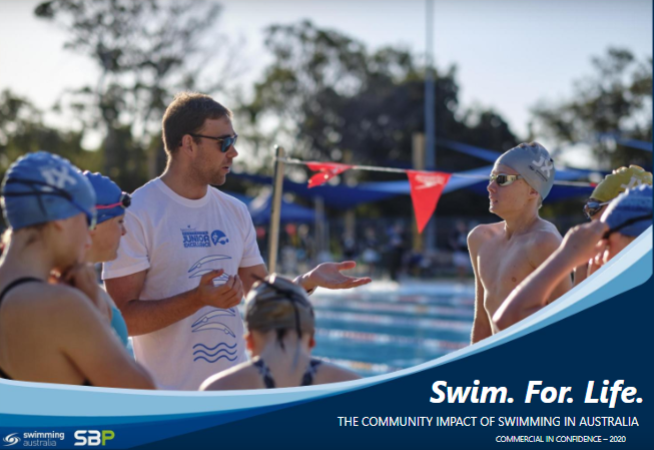
The independent national study, funded with the support of Sport Australia, was completed by experienced management consultants Sport Business Partners and Street Ryan. It was aimed at better understanding the broader community benefits of competitive and social swimming – across each of economic, social and health impacts.
Swimming Australia Chief Executive Leigh Russell said she believed sport and recreation was going to play a huge role in helping society transition post COVID-19.
“Sport plays a full-time role in society and is an integral part of community health, both from a physical health perspective but also in the mental health space,” she said.
“The physical and mental health benefits of swimming are widely recognised. The findings of this report strongly reinforces that point and also illustrates that swimming provides very significant social and economic impacts as well.
“COVID-19 has had a devastating impact on our Australia and as we look to try and come out the other side, it is becoming increasingly clear that sport will be a huge lever in re-building communities. With our participation levels, swimming has a big part to play.
“Swimming can also play a critical role in addressing broader societal challenges such as rising obesity, an ageing population, and therapy and rehabilitation for those people living with chronic health conditions or disabilities.”
The quintessential Australian pastime has long been a life-saving skill that is integral to the social fabric of Australia, but it is also a sport for all and a sport for life with all ages, all abilities and all backgrounds participating.
With 5 million participants across Australia, the report also found swimming teaches life skills such as discipline, hard work, determination, work ethic, time management and commitment.
“Swimming is Australia’s largest participation sport that provides an outlet for so many people and brings with it so many unique strengths,” said Russell.
“We know it contributes to a broad range of social benefits to local communities, including community cohesion and greater social inclusions – for example we now know people who swim are nearly twice as likely to volunteer within the community than general sports participants.”
Sport Business Partners Managing Director, Martin Hirons, said: “Swimming is Australia’s largest participation sport, and by some distance, so it is no surprise that it facilitates an enormous annual contribution to the Australian community.
“Since 2015, SBP has completed two-three of these types of studies per year and the quantum impact assessed for swimming in Australia is the largest we have recorded to date.
“In our view, this is another great result for the whole industry and further evidence to support increasing investment into swimming.”
Using current Sport Australia AUSPLAY data, online surveys and primary research with swimming stakeholders and participants, the study explored a range of social capital indicators used by the Australian Bureau of Statistics to understand the difference between swimmers and the general population.
The economic benefit to Australia is delivered through a range of factors including, competitive and recreational swimming events, expenditure on goods, services and employment by swimming clubs and associations, spectator attendance and swimming related travel and tourism.
See the full results of this study HERE
To view an infographic of the results click HERE
Read the article by Swimming Australia HERE



